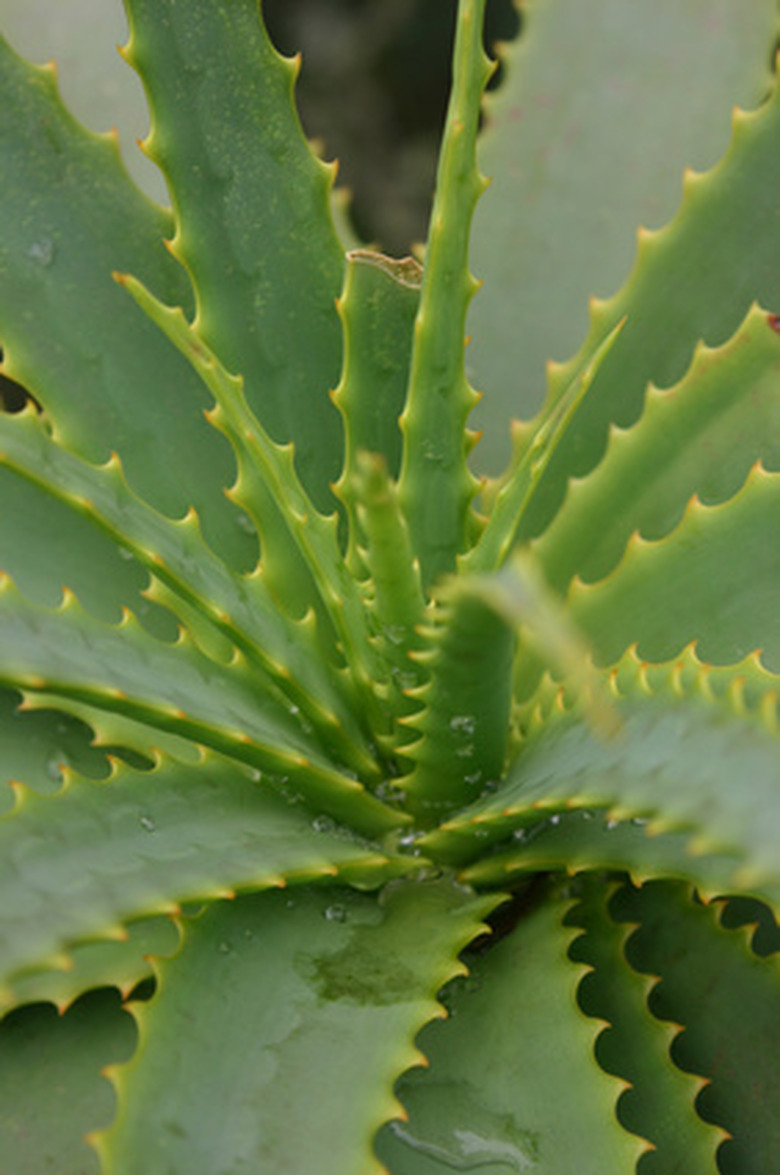Aphids On My Aloe Plant
Aloe vera (Aloe barbadensis) is native to Africa, but has been cultivated and used medicinally in many parts of the world for over 6,000 years. Over 180 species exist, all succulents with tender leaves that are very susceptible to frost damage. Aloes grow year-round outdoors in warm, mild climates. In temperate climates, they grow as houseplants during winter months.
Significance
Healthy aloe vera plants will survive a small aphid infestation with no ill effects. But larger aphid populations can do considerable damage. Black sooty mold fungus or dark bumps or growths (gall) may appear on the leaves. The stems may be misformed or shrunken. Additionally, aphids secrete a sticky substance called honeydew that puddles on the ground or floor around the infected plant.
- Aloe vera (Aloe barbadensis) is native to Africa, but has been cultivated and used medicinally in many parts of the world for over 6,000 years.
- In temperate climates, they grow as houseplants during winter months.
Identification
Aphids hide on the undersides of plant leaves and may be brown, gray or green, depending on the species. A sticky floor under plants is a tell-tale sign of aphid infestations. Ant colonies around the plant also signal a possible aphid infestation since ants eat honeydew, according to the University of California at Davis Integrated Pest Management Program (UC IPM).
Natural Solutions
Hosing the undersides of leaves with a high-pressure garden hose will destroy most aphids. Aphids have many natural predators, including ladybugs and lace wings. Practices such as providing natural habitats for these insects and avoiding the use of pesticides will encourage beneficial insects to make your garden home. These voracious predators are effective at keeping aphids under control, according to UC IPM.
- Aphids hide on the undersides of plant leaves and may be brown, gray or green, depending on the species.
- Ant colonies around the plant also signal a possible aphid infestation since ants eat honeydew, according to the University of California at Davis Integrated Pest Management Program (UC IPM).
Natural Insecticides
Insecticidal soaps coat the bodies of aphids, smothering them. These products must coat the insect to work effectively and aren't effective on aphid larvae. According to the Missouri Botanical Garden, insecticidal soaps are not toxic to birds, pets or the adult forms of beneficial insects like ladybugs or praying mantis. Insecticidal soaps are ineffective once they've dried, so re-application is often necessary.
Warning
Chemical insecticides should be avoided or used very carefully, advises UC IPM. These products kill all insects and may even hurt birds and fish. They also pollute water systems and ground water. Generally, their potential for damage outweighs any positive effects they may have.
- Insecticidal soaps coat the bodies of aphids, smothering them.
- These products must coat the insect to work effectively and aren't effective on aphid larvae.
